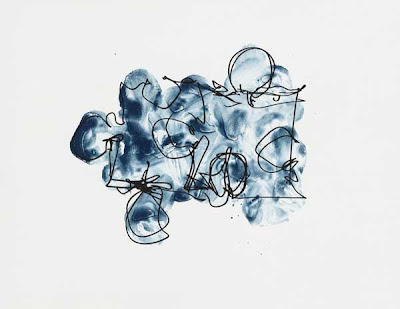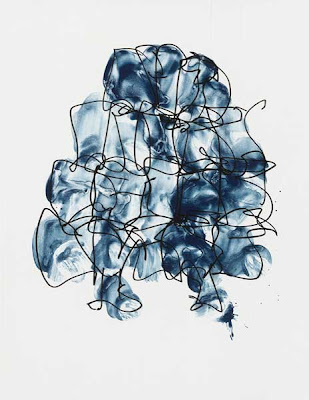
Puzzled #3, 2011
Two-Color Lithograph, 14 x 18″
Edition of 18/35 Published by Gemini G.E.L.

Puzzled #4, 2011
Two-Color Lithograph, 14 x 18″
Edition of 18/35. Published by Gemini G.E.L.

Puzzled #5, 2011
Two-Color Lithograph, 14 x 18″
Edition of 18/35. Published by Gemini G.E.L.
This Canadian-American based in Los Angeles is known for his deconstructive architecture that strays into poststructuralist design. Gehry is a Pritzker Prize winner for his advances in architecture. The 2010 world Architecture survey stated that his buildings were among the most important works of contemporary architecture, while Gehry was labeled “the most important architect of our age” by Vanity Fair. Has received a dozen honorary degrees from several universities throughout the United States and abroad.
Born Frank Owen Goldberg on February 20, 1929 he grew up in Toronto, Canada. In 1947, the architect moved to California where he got a job driving a delivery truck while he attended Los Angeles City College. Eventually Gehry graduated from the School of Architecture at the University of Southern California in 1954. In 1956 his wife, Anita Snyder, convinced him to change his name to Frank O. Gehry because of the anti-semitism Gehry had experienced throughout his life. After his graduation, Gehry dabbled in different fields of employment and joined the United States Army. He later moved his family to Cambridge, Massachusetts so he could study city planning at the Harvard Graduate School of Design but left before completing the program. In 1966 Gehry divorced his first wife and remarried Berta Aguilera in 1975; Gehry has two daughters from his first marriage and two sons from his second.
In 1977 Frank and Berta Gehry bought a small Dutch colonial home in Santa Monica, California. While leaving the house intact, Gehry’s deconstructivist additions composed of wood, glass, aluminum and chain link fencing caught the attention of his unsuspecting neighbors and the architectural world. This remodel of his home jumpstarted his career, turning Gehry into an architectural phenomenon.
Frank O. Gehry has designed buildings throughout the United States and abroad. He is best known for unusual, poststructural works that seem to defy the laws of gravity. A few of the many buildings that he has brought to life are the Walt Disney Concert Hall in downtown Los Angeles, California; The Experience Music Project in Seattle, Washington; Dancing House in Prague; 8 Spruce Street in New York City.
This acclaimed architect also dabbled in works on paper. The series of three lithographs designed by Frank Gehry in the Escalette Collection of Art at Chapman University are representations of his architectural style in a different medium. These works evoke the movement and structural elements of Gehry’s architecture creating a three dimensional feeling in a two dimensional space. Puzzled 3, Puzzled 4, and Puzzled 5 are on display at Chapman University.
See more of Gehry’s “Puzzled” prints from Gemini G.E.L at their website here.
All text and images under copyright. Please contact collections@chapman.edu for permission to use. Information subject to change upon further research.
Text Revised 07-05-2014

